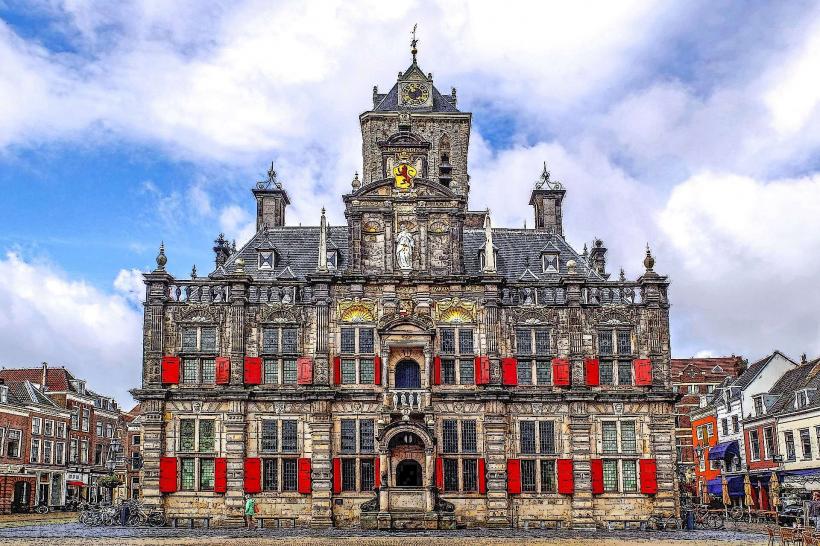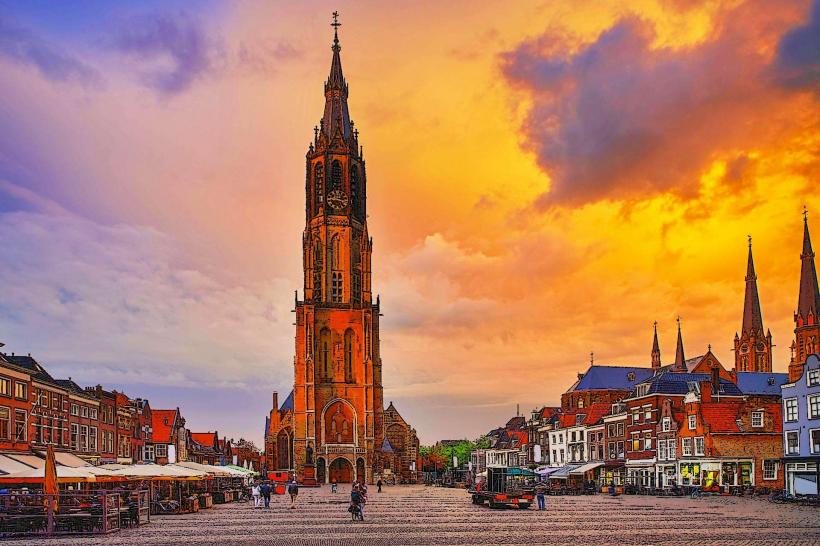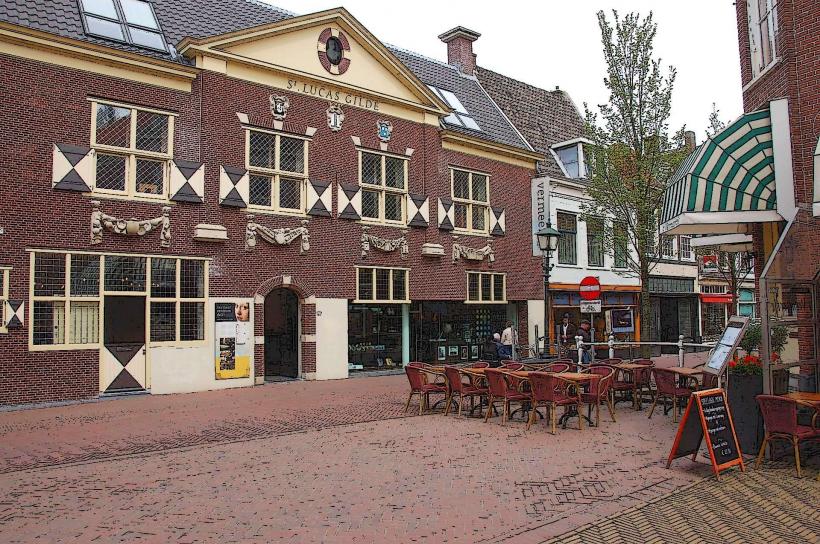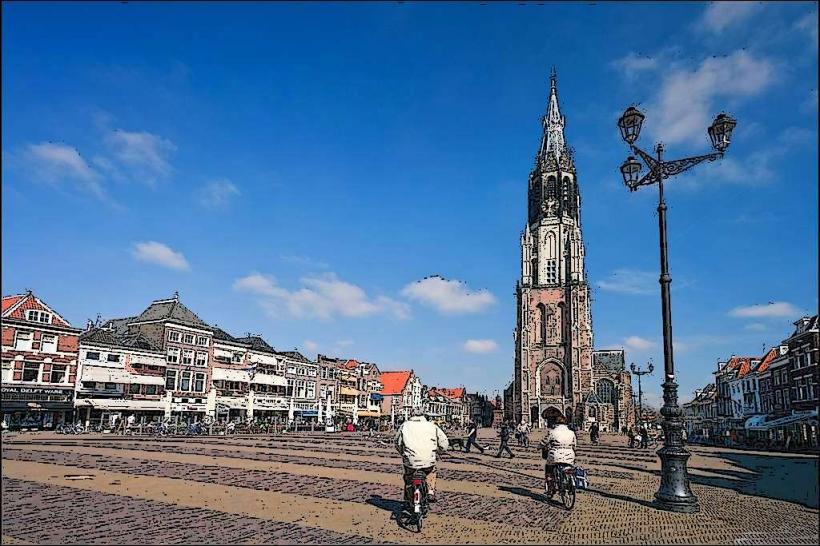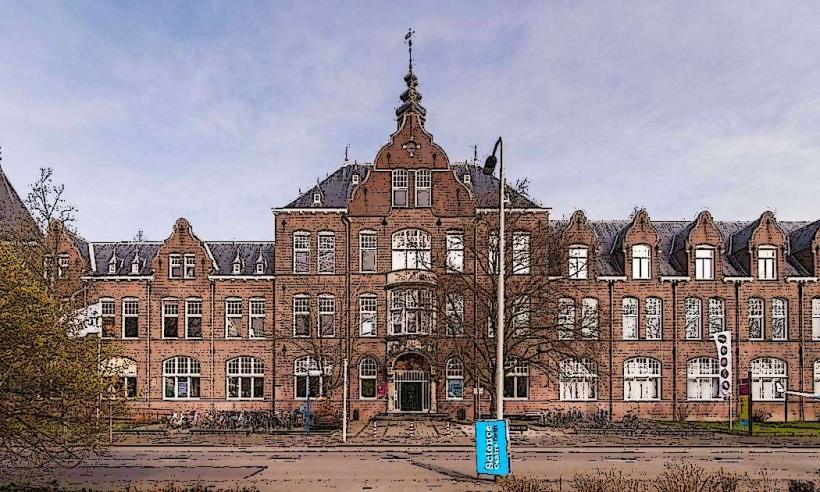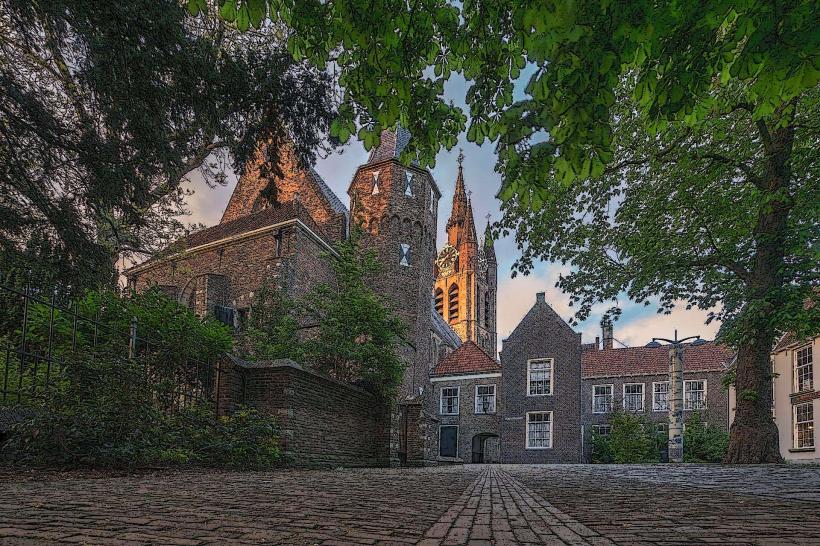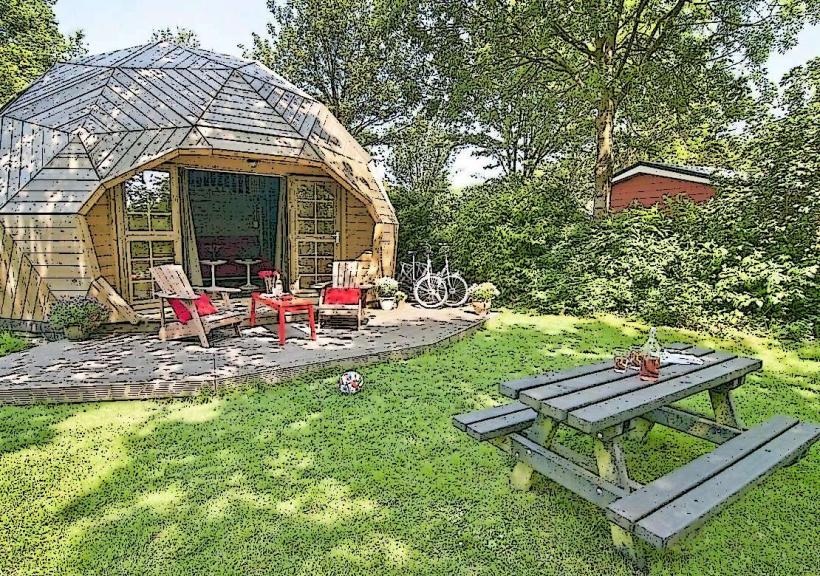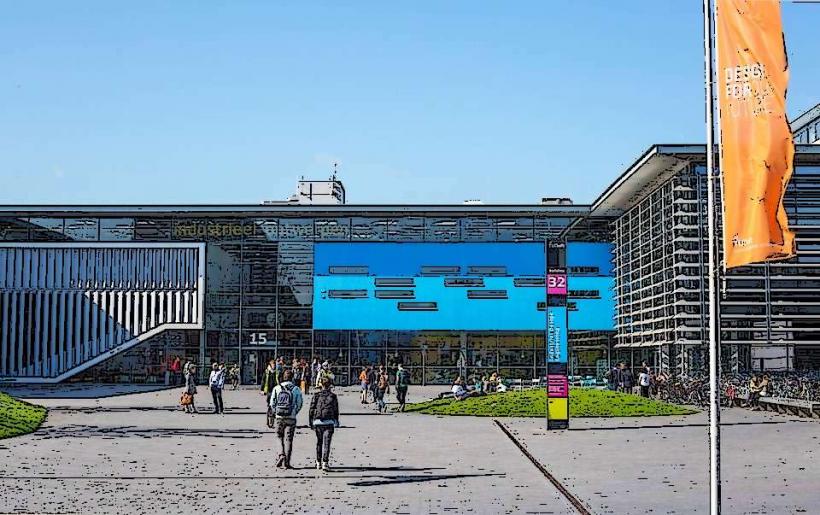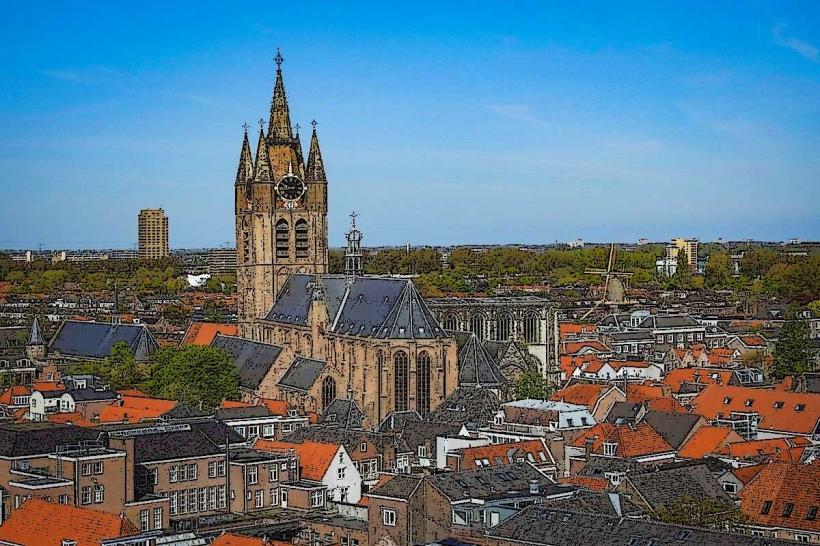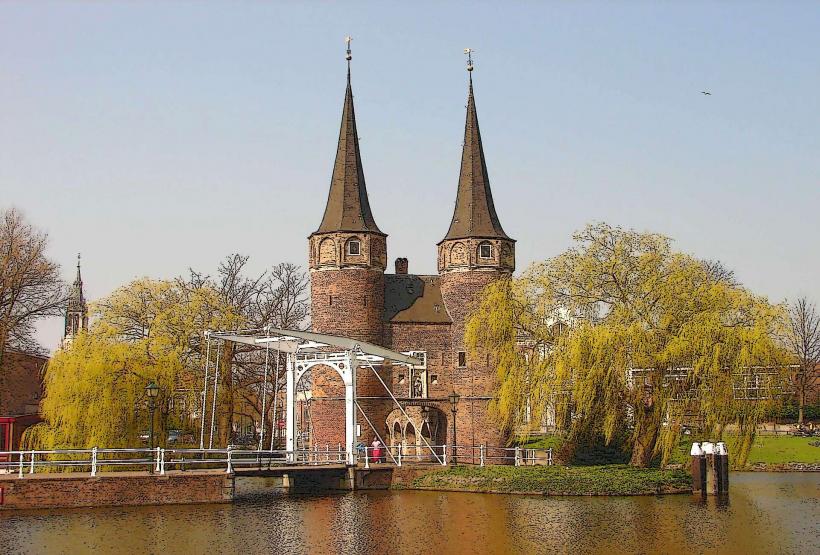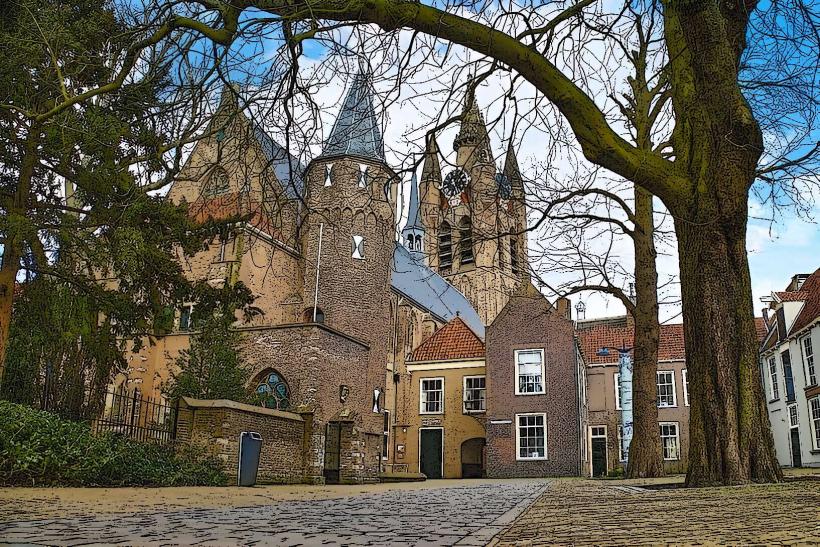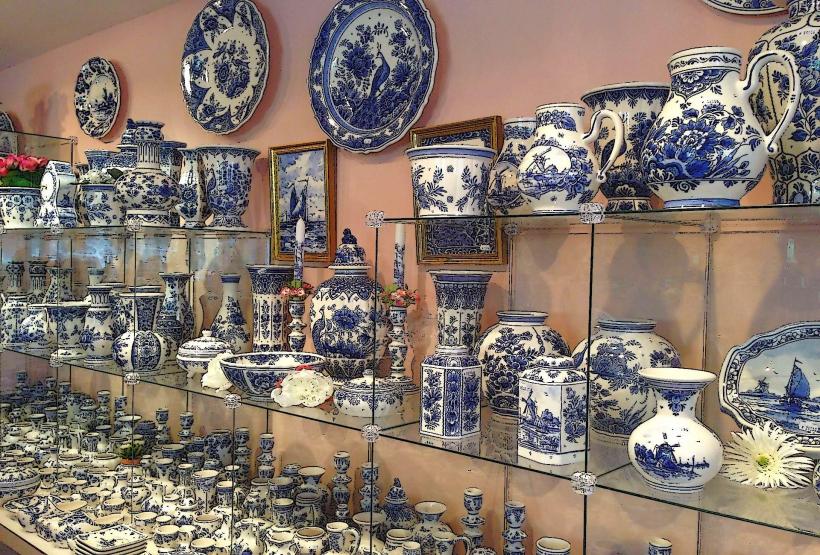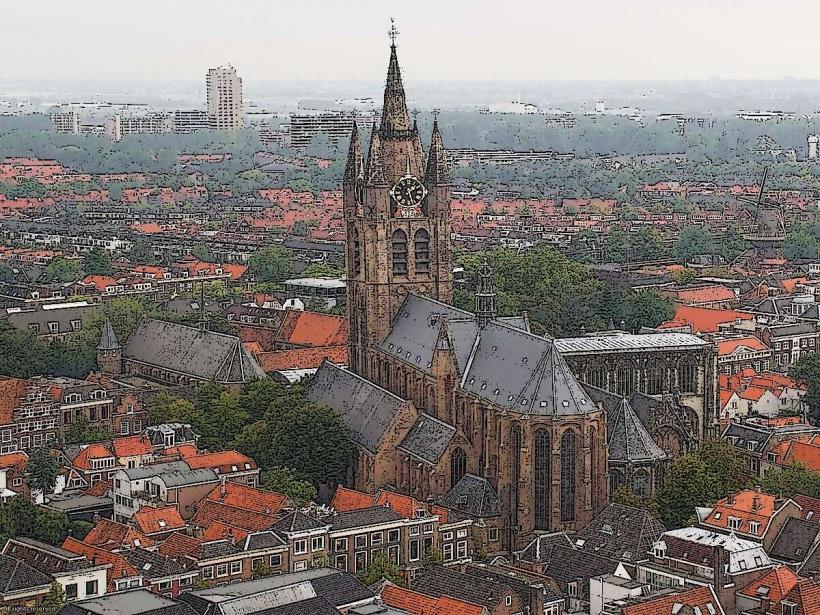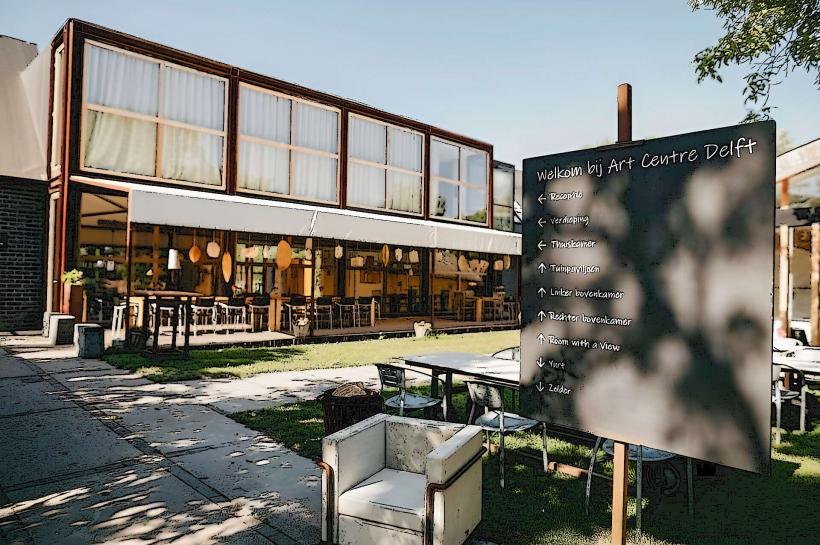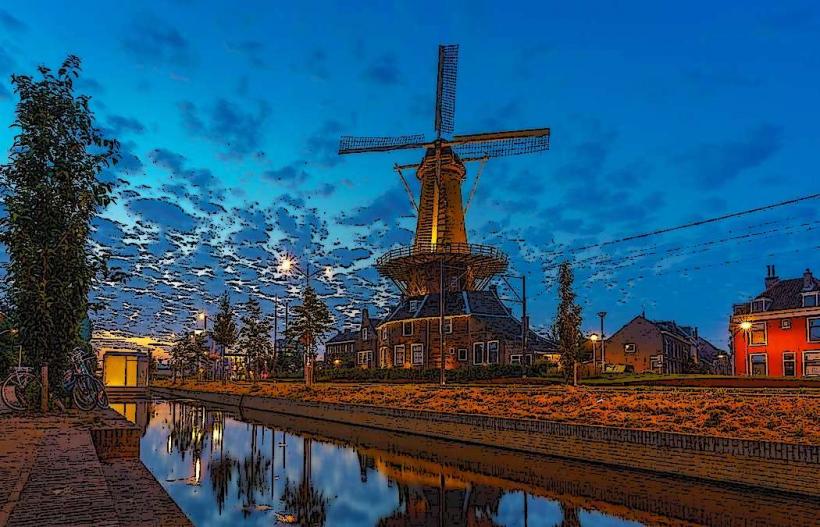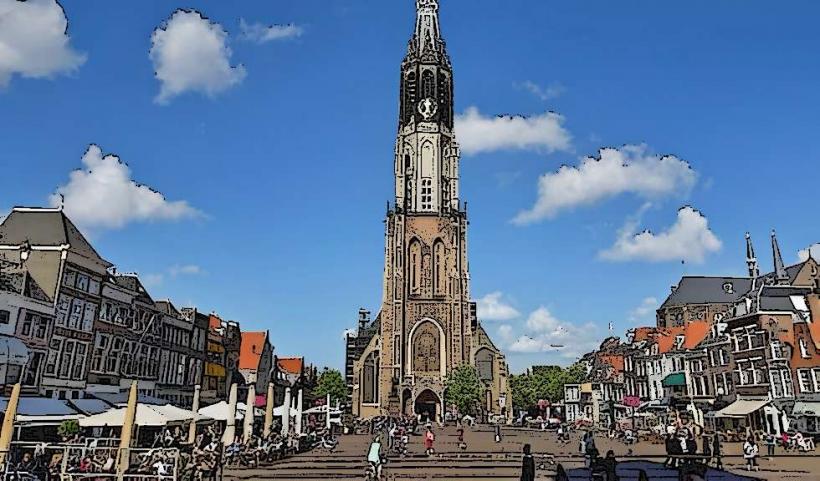Information
Landmark: Old Church (Oude Kerk)City: Delft
Country: Netherlands
Continent: Europe
The Old Church (Oude Kerk) in Delft, Netherlands, is one of the city’s most iconic landmarks, known for its Gothic architecture, rich history, and historical significance. It is the oldest church in Delft, with a history dating back to the 13th century, and is closely associated with the city's cultural and religious development. Here’s a detailed look at the Oude Kerk:
1. Historical Background
Foundation and Construction: The Oude Kerk was founded in 1246 and was originally constructed as a Catholic church in the Romanesque style. Over time, it underwent significant renovations and expansions, especially in the 15th century, when it adopted a Gothic style, which is still visible today.
Reformation: Like the Nieuwe Kerk, the Oude Kerk experienced a major transformation during the Dutch Reformation in the 16th century. After the Reformation, the church became a Protestant place of worship, and many of the Catholic symbols were removed or altered to reflect the new religious order.
Role in the Community: Throughout its history, the Oude Kerk has been the center of religious life in Delft, serving as the city’s main church for centuries. It is also the burial place for many prominent figures from the city’s past, particularly well-known citizens and local leaders.
2. Architectural Features
Gothic Architecture: The Oude Kerk is an excellent example of Gothic architecture, with features such as pointed arches, ribbed vaults, and flying buttresses. These elements contribute to the church’s soaring interior, creating a sense of height and spaciousness.
Tower: The church’s most recognizable feature is its leaning tower, which stands at 75 meters (246 feet) tall. The tower leans slightly to one side due to the sinking of the foundation over the centuries. It is a distinctive feature of the Delft skyline and is one of the most photographed aspects of the church.
- Bells and Carillon: The tower houses a carillon, and the bells chime regularly. The leaning tower and its bells are an integral part of the church’s charm and history.
Facade: The facade of the church is marked by twin portals, stained-glass windows, and intricate stone carvings, depicting biblical scenes, saints, and figures important to Delft’s history. The entrance is grand, with large doors leading into the church’s interior.
3. Interior Design
Nave and Aisles: The interior of the Oude Kerk features a long nave with tall, elegant columns and arched ceilings. The design of the church is simple yet majestic, with a clear focus on height and openness.
Wooden Ceiling: One of the most striking features of the church is its beautifully carved wooden ceiling, particularly the intricate wooden beams that span the nave and the aisles. These beams were added during the 16th century, and they reflect the craftsmanship of the period.
Stained-Glass Windows: The Oude Kerk features several stained-glass windows, some of which date back to the 15th century. The windows depict biblical stories and religious symbols and allow light to filter in, creating a peaceful and reverent atmosphere inside the church.
Pulpit and Organ: The church contains a baroque-style pulpit, ornately carved and standing prominently in the church. The organ in the church is also significant, used during services and concerts, and is known for its impressive sound.
4. Historical and Cultural Significance
Tomb of Johannes Vermeer: The most famous historical figure buried in the Oude Kerk is the renowned Dutch painter Johannes Vermeer. Vermeer is considered one of the most significant artists of the Dutch Golden Age, known for works such as "The Girl with a Pearl Earring" and "View of Delft." His tomb lies in the church, and the spot where he is buried has become a place of homage for art enthusiasts and history lovers alike.
Monuments to Prominent Citizens: In addition to Vermeer, the Oude Kerk also serves as the burial place for other notable figures in Delft’s history. The church contains numerous memorials and gravestones for Delft’s leaders, merchants, and artisans from the Golden Age.
Protestant Heritage: After the Reformation, the Oude Kerk became a Protestant place of worship. Today, it is an important symbol of the city’s Protestant heritage, and it continues to host services, religious events, and concerts.
5. Visiting the Oude Kerk
Location: The Oude Kerk is located in the city center of Delft, near the central market square, making it easy to visit alongside other key attractions like the Nieuwe Kerk (New Church) and Delft City Hall.
Opening Hours: The church is open to the public for visits, and it typically offers guided tours. Visitors can explore the interior, view Vermeer’s tomb, and learn about the church’s history through exhibitions and displays.
Services and Events: In addition to regular services, the Oude Kerk is often used for concerts, especially due to its excellent acoustics. It also hosts weddings, funeral services, and other religious events.
6. Fun Facts
Leaning Tower: The Oude Kerk’s leaning tower is one of the most iconic features of Delft. It leans slightly to the south, a result of the sinking foundation, which has become part of the church’s charm and identity.
Vermeer’s Burial: The exact location of Johannes Vermeer’s grave was not known for centuries. However, in 2004, a tombstone was discovered that identified Vermeer’s final resting place, and now the church is a popular pilgrimage site for art lovers.
Museum Exhibitions: The Oude Kerk occasionally features exhibitions that delve into the history of the church, the people buried within it, and its role in the city’s history. These exhibitions are a great way to learn more about Delft’s past.
7. Nearby Attractions
- Nieuwe Kerk: Just a short walk away, the Nieuwe Kerk is another important church in Delft, known for its royal connections and impressive Gothic architecture.
- Delft City Hall: Located next to the market square, the Delft City Hall is another architectural masterpiece, showcasing Renaissance style and the history of the city’s governance.
- Delft Canals: The Oude Kerk is near Delft’s picturesque canals, offering scenic views and a chance to explore the city by boat or on foot.
The Oude Kerk is not only a stunning example of Gothic architecture but also a vital part of Delft’s history and culture. Whether you're visiting for its religious significance, to see the tomb of Vermeer, or simply to admire its beauty, the church offers an unforgettable experience. Would you like to know more about its history or events?

